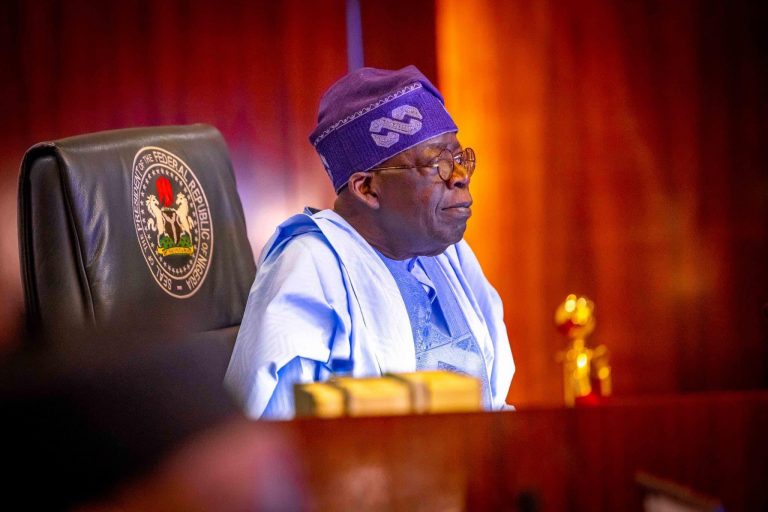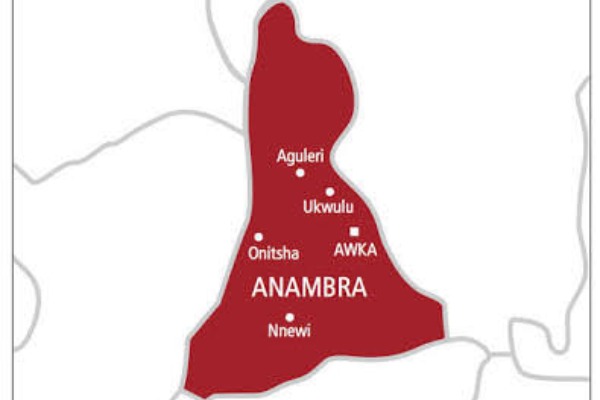US Polls: Americans Decide Biden, Trump Fate Today
The United States Presidential election is gearing up to be a close race as current President Donald Trump and Democratic candidate Joe Biden fight for the country’s most coveted post today.
The much-anticipated showdown is today and the candidates have been flat-out trying to win battleground states.
In 2016, Republican President Donald Trump secured an outright victory in the presidential election by flipping the staunchly Democratic “blue wall” states of Michigan, Wisconsin and Pennsylvania; states the Democrats thought they could count on.
In doing so, Trump won the Electoral College despite losing the national popular vote. The US “winner takes all” system made his narrow victories in those three states decisive – of the estimated 120 million votes cast in 2016, slightly more than 100,000 decided the election.
Here are the five of the key states that could be a decider in the 2020 race for the White House.
Pennsylvania
The birth state of Democratic candidate Joe Biden, Pennsylvania is the largest of the three former “blue wall” states in contention. Philadelphia and Pittsburgh tend to vote Democrat by large margins while rural areas lean heavily towards the Republicans.
Historically, Democrats have tended to edge out the GOP among the state’s White working-class voters. As was the case in many traditionally Democratic areas outside big cities, Ronald Reagan won many of these voters – the so-called “Reagan Democrats” – in his 49-state 1984 landslide. His successor, George H. W. Bush, largely retained them four years later. But from Bill Clinton’s 1992 victory through Barack Obama’s 2012 re-election, the Democrats won enough of this White working-class swing vote to keep Pennsylvania in their column every time.
That changed in the 2016 election. Trump won by record figures in rural, conservative areas while flipping largely White working-class areas from the Democrats – such as Erie and Luzerne counties, both post-industrial “rust belt” areas.
If the polls are to be believed, this time is likely to be different. Biden has a 4-point lead in Pennsylvania, according to an aggregate of polls published by RealClearPolitics on Sunday. The numbers in suburban Philadelphia – the kind of upper-middle-class area that formed a crucial part of Reagan’s and Richard Nixon’s GOP coalitions – look especially bad for Trump: An NBC/Marist poll in September showed Biden leading there by a whopping 28 points.
However, some data suggests that, after erroneously predicting a Clinton victory in 2016, such polls may be misleading. When Pennsylvania voters were asked who would win the state in a Monmouth poll in July, Trump came out on top by 1 point. In the same survey, 57 percent said they thought there were “secret” Trump voters in the area.
The schedules of both campaigns in the final days of the race show they regard the state as vital. Trump held four rallies in Pennsylvania on Saturday and will return on Monday, the last day of campaigning. Biden has an event planned in Philadelphia on Sunday. The Biden campaign has said he and running mate Kamala Harris will campaign in “all four corners” of the state on Monday.
Michigan
Michigan has many of the same dynamics at play as Pennsylvania, notably seeing many White working-class Reagan supporters switching to the Democrats – putting the state in their column in every presidential election from 1992 through 2012 – until a return to the GOP helped Trump carry the state in 2016.
Again, polls suggest that Biden will once again turn the state blue: the RealClearPolitics average has him 7 points ahead. He appears to be in a stronger position with the Democratic base in Michigan than Hillary Clinton was last time: Biden beat Bernie Sanders decisively in the primary, whereas the leftist Vermont senator won a surprise victory over Clinton in 2016. An EPIC-MRA poll in June put Biden as much as 16 points ahead of Trump.
However, Democratic Congresswoman Debbie Dingle of Michigan – who warned the Clinton campaign that she was in trouble there in 2016 – told The Atlantic that the latter poll was “bullshit”. She said she was “seeing lots of Trump signs starting to pop up”. Nevertheless, Dingle has also said that Biden is in a better position than Clinton was “because Joe connects with working people”, noting that “a lot of people took [it] to heart when Hillary used the word ‘deplorables’” to describe Trump supporters and felt that she “looked down on” them.
As in Pennsylvania, both 2020 campaign schedules have underlined the swing state’s importance. Biden held a rally there on Saturday with former president Barack Obama. Trump held a “Make America Great Again Victory Rally” in Michigan on Friday. Biden’s wife Jill and Trump’s children Eric and Tiffany all campaigned there on Thursday.
Wisconsin
In 2016, Trump became the first Republican presidential candidate to win Wisconsin since Reagan and his famous 1984 landslide victory. Again, winning over White working-class voters who had long voted Democrat was the linchpin of Trump’s success. Reflecting the situation across the United States, the Republican base is concentrated in rural areas while Democratic strongholds are urban, including Wisconsin’s biggest city Milwaukee and liberal college town and state capital Madison.
The polls have suggested that voters in affluent suburbs surrounding major US cities appear to be ditching Trump. But some surveys suggest that the pivotal Milwaukee suburbs may be an exception, with a Marquette Law School poll published in early September putting Trump 10 points ahead.
In 2016, Trump campaigned in Wisconsin five times after the party conventions. By contrast, Hillary Clinton did not campaign at all in the state during the same period; she subsequently described her campaign as having been “caught by surprise” there.
Overall, the RealClearPolitics average gives Biden a 6-point lead in Wisconsin. Trump and Biden both campaigned there on Friday – the most recent of several trips both candidates have made to the state this year.
Georgia
No Democrat has won Georgia in a presidential election since Bill Clinton in 1992. But the GOP’s dominance of the state has loosened: a Democratic candidate flipped Georgia’s 6th congressional district by a narrow margin in the 2018 midterm election.
Largely composed of leafy Atlanta suburbs, the 6th district is the former seat of Bill Clinton’s chief Republican antagonist, right-wing former House speaker Newt Gingrich.
Republican Brian Kemp came out ahead by just 55,000 votes in the hotly contested 2018 gubernatorial election, with critics – including his Democratic challenger Stacey Abrams – alleging voter suppression. According to data analysed by The Economist, “the number of possibly disenfranchised voters was close to 50,000”, within the official margin. Regardless, the tight result underlined the GOP’s tenuous hold on Georgia.
The number of young and minority voters in Georgia has proliferated over the past decade. “The demographics move against us,” incumbent Republican Senator David Perdue told a group of GOP activists in April.
Biden is edging out Trump by just 0.8 points in Georgia, according to the RealClearPolitics polling average. Biden travelled to the state on Tuesday, giving a speech at Franklin Delano Roosevelt’s former retreat; Trump held a rally there on Sunday.
Florida
Now the third-most-populous US state, Florida has picked the winner in every presidential election since 1996 – but its status as a bellwether really captured the world’s attention in the 2000 presidential election. The vote hung on the Sunshine State’s then 25 (now 29) electoral college votes, which went to George W. Bush after a Supreme Court ruling on the recount.
Florida’s population has boomed over past decades thanks to influxes of largely White pensioners and largely Latin American immigrants. Some two-thirds of White voters in Florida told an AP exit poll in 2016 that they voted for Trump. Trump also performed well among the state’s sizeable Cuban-American population, largely descended from exiles who fled Fidel Castro’s communist regime, winning 54 percent of their vote. Clinton won by 71 percent among Latino Floridians of other origins.
The RealClearPolitics polling average has Biden leading by 1.2 points in the state, and some surveys suggest that support for the two candidates is shifting. After Florida’s pensioners played a significant role in Trump’s 2016 victory, a Quinnipiac poll in early October put Biden 15 points ahead among those residents over 65.
Late last month a survey for Telemundo put Biden and Trump at 48 and 43 percent, respectively, among the state’s heterogeneous Latino demographic. In comparison, Clinton won 62 percent of Florida’s Hispanic vote in 2016.
==
Strength and Weakness of Trump and Biden
The office of US president is being pursued by two men of nearly the same age who have lived very different lives.
Democrats Joe Biden born into a middle-class Catholic family, was a talented athlete, but not a very strange bookworm who attended fairly ordinary schools and studied law at university. Republicans Donald Trump was born into the family of a wealthy businessman, attended private schools and studied economics at university.
Trump’s Strength:
Tax cuts. Trump was quite unpopular during his first year until he and the Republican-majority parliament got through the tax cuts. Five of them made it easier for those who already had the most money, as even ordinary wage earners had more money left in their hands. Before the relief, there was a difference of 20 percentage points between those who supported Trump and those who opposed it, which halved in the months following the reform.
Judge appointments. President Trump has got a record number of conservative judges to the country’s appellate courts as well as the Supreme Court, and it pleases Republican voters. These federal courts have considerable power over the affairs of the country.
economy. Polls show Americans trust Mr Trump with the economy more than Mr Biden, a key issue for many voters.
The President also enjoys the advantage of being the incumbent which gives him the opportunity to use the White House as a backdrop for major announcements in the coming weeks.
Trump’s Weakness:
health care. In the US mid-term election of 2018, health care played a key role as Democrats took over the majority of the House of Commons for themselves. In the eyes of voters, Democrats run health policy better.
treatment of coronavirus. For Trump, the pandemic came at almost the worst possible time, as a result of which the US economy began to stagnate. Less than 40 percent believe Trump has succeeded in tackling the crisis.
acts that divide the people. Donald Trump shares opinions, there is probably no ambiguity about it. What now seems to hurt his support now, however, is the attitude towards anti-police violence protesters and the Black Lives Matter movement. Trump has categorically focused on branding protesters as vandals and hooligans. Such a divisive activity, seen as accelerating violence and dichotomy, alienates moderate Republicans.
Biden’s Strength
safety and experience. Biden, who has been involved in politics all his life and his positions on political controversy, has been tricked through many times. There are no skeletons in the closet, everyone knows who he is and what he represents. Opponents find it difficult to find decent percussion weapons against him.
moderation and empathy. Biden has positioned himself firmly at the centre of the Democrats. It’s not impossible to vote for Republicans tired of Trump, nor for the young left, even though string dance hasn’t always gone right into the tube. Like Obama, his messages are unity and hope. Biden is considered an empathetic and approachable person. Personal tragedies reinforce the image: wife Neilia and a 1-year-old daughter Naomi died in a car accident in 1972 and a firstborn son Beau died in 2015 of brain cancer at the age of 46.
Fundraising. It is no secret that in the United States, in order to succeed, significant funds are often needed for campaigning. In August, Biden broke a clear all-time record and hoarded $ 364 million. Of the amount, 205 million came from small donors, which is a particularly good sign. The previous record was the nearly $ 200 million raised by Barack Obama in September 2008. Success raised eyebrows, as Biden has never been a money machine.
Biden’s Weakness
mediocrityBiden is a hand-warm candidate, about as inspiring as a nap. Warm up nicely and run his business, but don’t rush home because of it. Measured by charisma, he is a light year away from Trump, Obama, Clinton, and Ronald Reaganista.
public speaking. Biden may suddenly be silent in the middle of a sentence and continue on a completely different topic and let out special frogs from his mouth. He himself has called himself a “blistering machine” and has openly told about his stuttering problem that plagued him as a child. The debates are a serious place for him. Trump has no problem grasping these weaknesses and portraying Biden as an old confused nonsense.
possible sensitive skin. Biden has grown into a politician at a time when things were arguing, not people. In modern times, the opponent strikes under the belt and is strong, and you have to be ready for that. You get hurt, but Biden must not lose his temper, especially in public TV debates, even if Trump says what, and he must be able to strike back to the same extent.













Post Comment